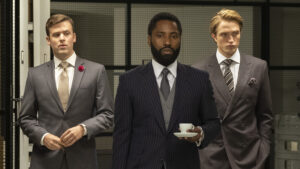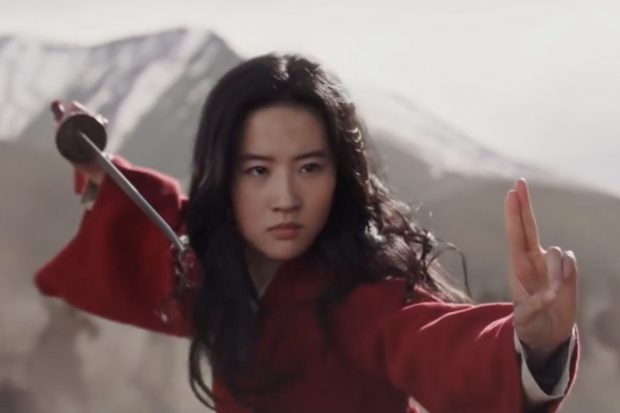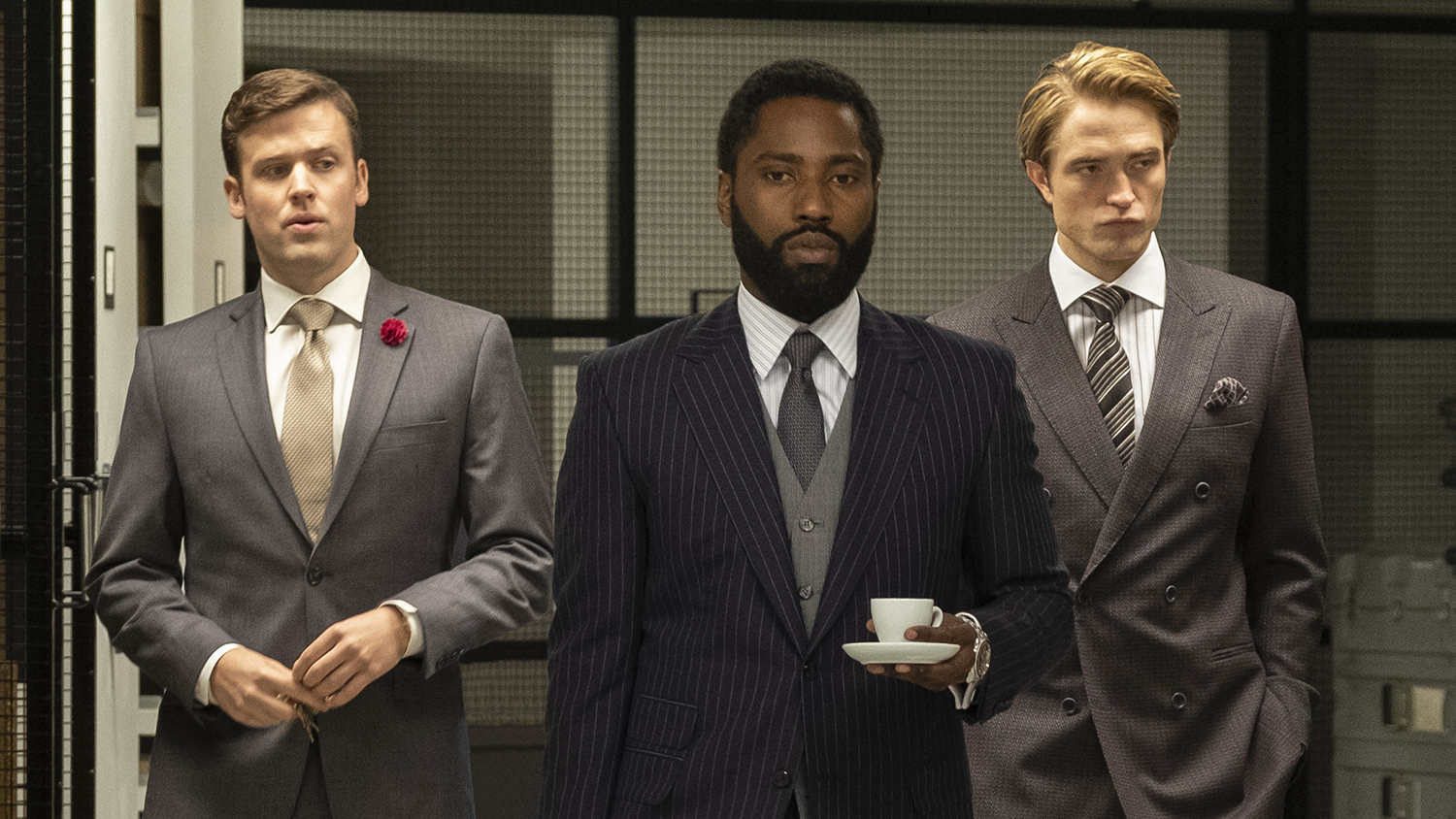Mulan, Tenet, Antebellum: Critical Insights
Posted on September 6, 2020 at 12:00 pm
Some of the best writing about film I’ve read this week:

Jackson McHenry on Vulture discovers that The Best Parts of Christopher Nolan Movies Are All the Dainty Snacks and Drinks.
His films are full of immaculately manicured and coiffed heroes who tend to sport expensive suits, nice watches, and a level of deep sadness about women who’ve died in their proximity. They rarely sit down for a full meal, but they often pause for a quick cup of a tea and maybe half a sandwich, often while delivering some bit of exposition to another character. Once you start noticing the number of conversations that take place over dainty drinks and appetizers in Christopher Nolan movies, you simply cannot stop. He loves a small, civilized repast, especially if it involves a silver serving tray, and his universe is full of angsty men having a cup of a tea and a little something to tide them over till later.
On Slate, Sam Adams explains “Tenet” as thoroughly and clearly as it is humanly possible. Here’s a sample:
The word tenet reads the same backward and forward, one of several references to reversibility embedded in the film. Andrei Sator’s surname comes from the Sator Square, a five-by-five grid of interlocking letters that reads the same in every direction. It was first discovered in the ruins of Pompeii, which is a location that Andrei’s wife, Katherine (Elizabeth Debicki), and their son seem especially keen on visiting.
The other five words in the Sator Square all turn up in the movie at some point: There’s Rotas, the name of the security company that guards Andrei’s warehouse in the Oslo airport; Opera, the location of the movie’s first set piece; Arepo, the name of the art forger whose bogus Goya Katherine, who works at a high-priced auction house, arranged to have sold to her husband, and which he’s now using as leverage to keep her from leaving him. And there’s the central word in the Sator Square, the axis on which it turns: tenet.
Tenet is also the word ten backward and forward, which becomes key to the movie’s climactic sequence, in which synchronized attack teams move through time in opposite directions on a 10-minute countdown, performing what the movie calls a “temporal pincer.”
“Mulan” director Nikki Caro talks about filming the battle scene in the New York Times. At Polygon, Petrana Radulovic writes about one big change from the Disney animated version. The scene where Mulan dramatically cuts her hair off with her sword does not occur in the live-action remake and the larger implications of the Eastern vs. Western ideas about characters.

From an East Asian perspective, it’s pretty apparent why an independent Mulan wasn’t working well with the story. The idea of pursuing an individual destiny has been romanticized for male protagonists throughout Western canon. In adapting fairy tales like Beauty and the Beast and The Little Mermaid, where female protagonists passively waited around and suffered, Disney found it empowering to reinvent them as active heroines taking control of their own destinies. But Mulan doesn’t draw from a history of male heroes embarking on journeys. The idea of striking out against family goes against the Confucian notions of the original ballad.
My friend and one of my favorite critics, Roxana Hadadi writes about “Mulan” for Pajiba. She calls the film “visually resplendent but narratively stifled.”
On paper, the representation politics of the film hold up—but they act in service of a story that is so adamant about traditional masculinity and nationalist loyalty that there’s literally no other plot. Niki Caro’s Mulan is grandly rendered but narrowly minded, and the film’s self-seriousness will make you long for the 1998 animated version’s subversive gender politics and sense of fun.
And Robert Daniels says that “Antebellum” is the worst movie of the year. His review may be one of the best of the year. “‘Antebellum’ is an unrepentantly violent film, and this entire sequence shows how it falsely equates shock value with empathy.”
In Antebellum, Bush and Renz desperately prod around in the dark, trying to discover the gravity of prestige slave movies like 12 Years a Slave. Slaves whistle “Lift Every Voice and Sing” in the cotton fields; one Confederate soldier calls another “snowflake”; grey-coats chant the Nazi refrain “blood and soil”; a statue of Robert E. Lee materializes on a foggy battlefield. The directors evoke these images as symbols, but don’t have the next-level horror-film ability to match symbolism with meaning. The narrative’s metaphorical thud resounds as loudly as the rolling sea.
In one of the movie’s few satisfying moments — and in a lyrically beautiful image — Eden rides a horse while wearing a Union coat and brandishing a battleaxe. She careens through Confederate lines, mouth bloodied and agape. But her uplifting revolution can’t redeem Antebellum’s grotesque wallowing and jangly script.


